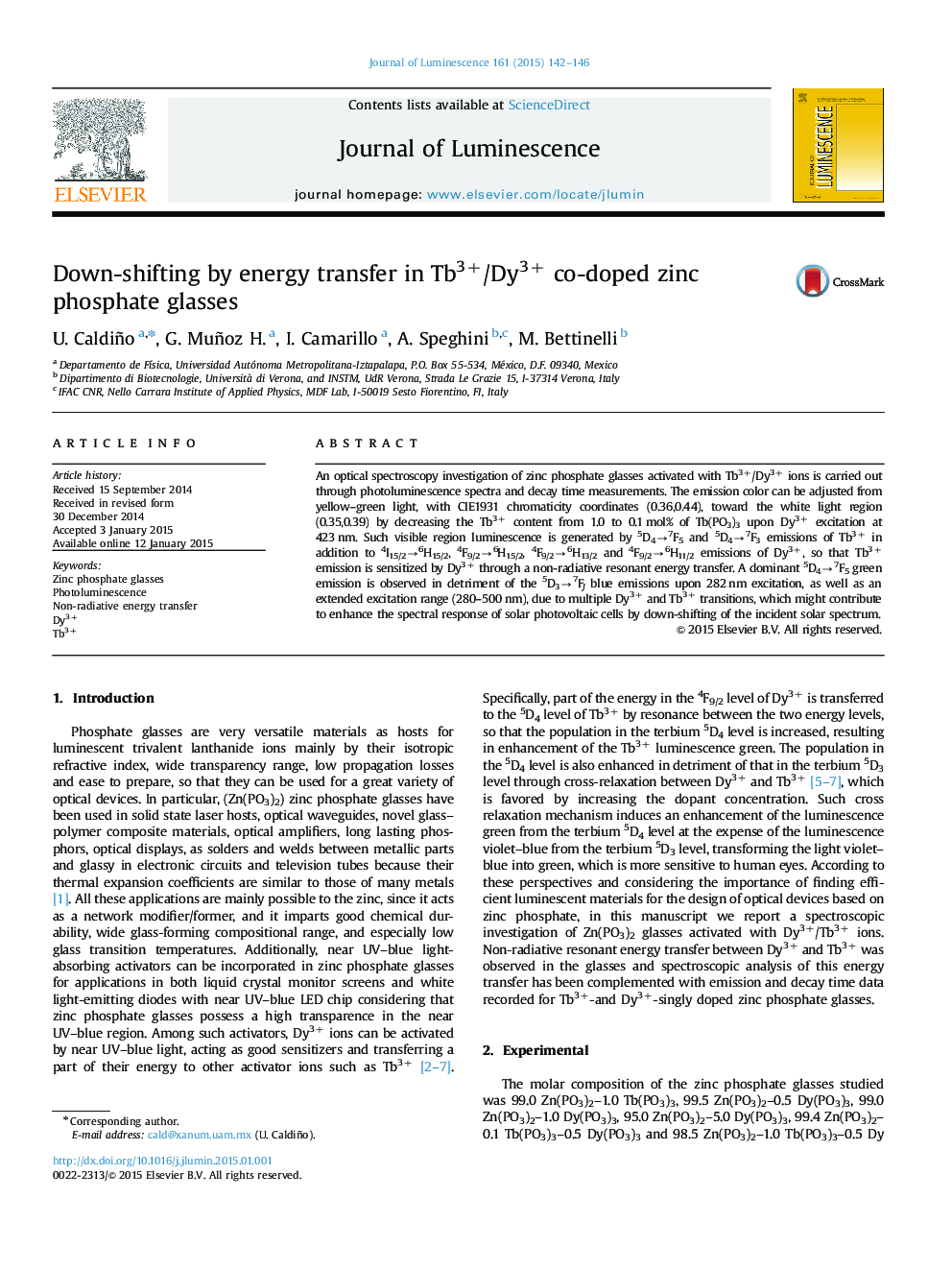| Article ID | Journal | Published Year | Pages | File Type |
|---|---|---|---|---|
| 5398937 | Journal of Luminescence | 2015 | 5 Pages |
Abstract
An optical spectroscopy investigation of zinc phosphate glasses activated with Tb3+/Dy3+ ions is carried out through photoluminescence spectra and decay time measurements. The emission color can be adjusted from yellow-green light, with CIE1931 chromaticity coordinates (0.36,0.44), toward the white light region (0.35,0.39) by decreasing the Tb3+ content from 1.0 to 0.1Â mol% of Tb(PO3)3 upon Dy3+ excitation at 423Â nm. Such visible region luminescence is generated by 5D4â7F5 and 5D4â7F3 emissions of Tb3+ in addition to 4I15/2â6H15/2, 4F9/2â6H15/2, 4F9/2â6H13/2 and 4F9/2â6H11/2 emissions of Dy3+, so that Tb3+ emission is sensitized by Dy3+ through a non-radiative resonant energy transfer. A dominant 5D4â7F5 green emission is observed in detriment of the 5D3â7FJ blue emissions upon 282Â nm excitation, as well as an extended excitation range (280-500Â nm), due to multiple Dy3+ and Tb3+ transitions, which might contribute to enhance the spectral response of solar photovoltaic cells by down-shifting of the incident solar spectrum.
Related Topics
Physical Sciences and Engineering
Chemistry
Physical and Theoretical Chemistry
Authors
U. Caldiño, G. Muñoz H., I. Camarillo, A. Speghini, M. Bettinelli,
